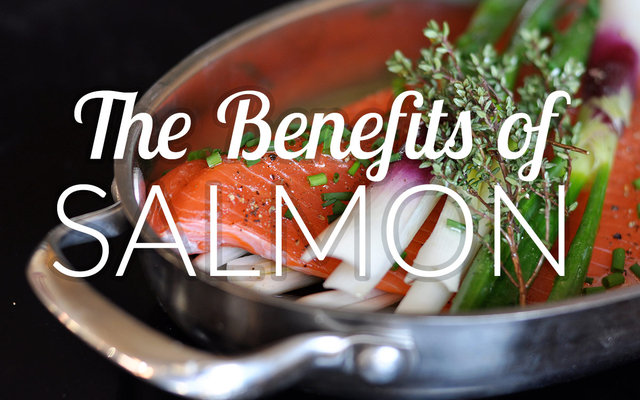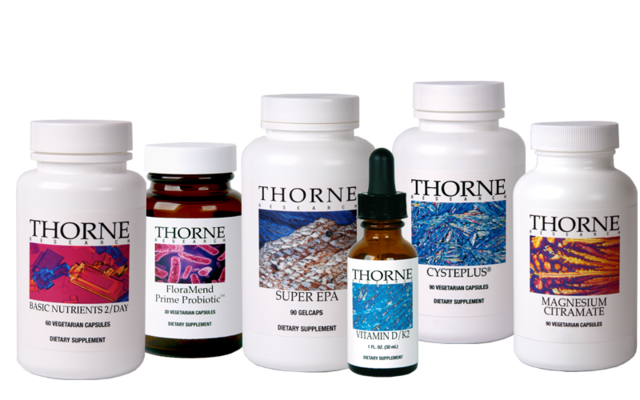by Tom Malterre | 20 comments
Gluten-Free Baking Basics & Delicious Recipes
When you're just beginning a gluten-free diet, having bread, cookie, and muffin recipes that mimic the flavor and texture of wheat-based products can feel like life-savers and help keep you on track in going gluten-free. We have worked over the years to create healthy and simple gluten-free baking recipes that are both nourishing and that taste great. They aren’t meant to be consumed everyday—no matter how nutritious the ingredients are, eating a diet containing too many baked goods won’t benefit your health in the long run. We prefer to revolve our diet around vegetables, beans, nuts, fruits, whole grains, and meats. Baked gluten-free treats are prepared only a few times a month in our home. But when you're going gluten-free, there's nothing like being able to enjoy a gooey cinnamon roll or a slice of freshly baked bread to remind you that you can still enjoy great baked goods and have a healthy diet!
You can still enjoy breads, cookies, cakes, and pastas with such alternatives as brown rice flour, quinoa flour, buckwheat flour, nut flours, coconut flour, and arrowroot starch?
Whole Grain Gluten-Free Flour Basics
If you are new to gluten-free baking, you might find the amount of different flours and different baking methods a bit overwhelming. With a little practice, however, you’ll get the hang of it, and baking gluten-free will become second nature. Keep in mind that your gluten-free baking won’t be completely gluten-free if you are still using wheat flour in your kitchen. Flour dust can linger in the air for a day or more and land on countertops, dishes, and cooking utensils. It only takes a minute amount of gluten to cause a reaction in a gluten-sensitive person, so it's best to keep the kitchen gluten-free for sensitive family members.
Many gluten-free products and recipes rely on the typical white rice flour, potato starch, and tapioca flour combinations. These refined flours and starches are devoid of many natural fibers, vitamins, minerals, and phytochemicals, and can create a sharp rise in blood sugar. For people with functioning blood sugar regulation, this can cause a large spike in insulin, with a subsequent quick drop in circulating sugar (hypoglycemia), which may lead to fatigue, foggy thinking, anxiety, and cravings for sweets. For others with dysfunctional blood sugar regulation, this may lead to extended elevated levels of blood sugar and insulin leaving them susceptible to increased inflammation, and at increased risk for numerous chronic diseases.
In our recipes, we rely on either whole grain gluten-free flours or grain-free flours and use as little starch as possible, or none at all. We have used flours like buckwheat and brown rice flour, but we also use coconut, almond, hazlenut flours, and I like to add in ground nuts whenever possible to add flavor and protein.
Sprouting Your Gluten-Free Flours
If you want to take your health one step further, consider using sprouted gluten-free flours in cookies, bars, and breads, which offer even more nutrients than regular whole grain flours. Sprouting wakes up the grain for germination, which increases nutrients, reduces phytic acid, and changes starches into a more digestible form. If you are making sourdough breads, rolls, pancakes, etc., there is no need to buy sprouted flours—the process of making a sourdough starter renders the grain flours very digestible with a high nutrient availability. Additionally, when using blanched nut flours or coconut flour, there is no need for soaking or sprouting. Sprouted rice flour will also reduce your risk of exposure to arsenic.
Buying & Storing Gluten-Free Flours
It saves quite a bit of money and packaging if you buy your flours in bulk. If you don’t use your gluten-free flours frequently, it is best to store them in glass jars in your refrigerator. Otherwise store them in your pantry for up to 9 months. If you buy twenty-five pounds of flour at a time, freeze three quarters of it and store the rest in your pantry or refrigerator.
Buy Superfine Brown Rice Flour
Buy Raw Buckwheat Groats for grinding your own flour
Xanthan Gum—Yes or No?
You’ll notice that the majority of our newer recipes don’t contain any xanthan gum. This is because xanthan gum isn’t a real food. Xanthan gum is an ingredient that is commonly used in gluten-free baking to help bind ingredients together, provide elasticity, and hold moisture. It is a hydrocolloid, meaning it forms a gel in the presence of water. Xanthan gum is most often produced using corn though it can also come from wheat, dairy, or soy. Labeling laws don’t require manufacturers to list where it comes from. Xanthan gum is created from the excrement of the bacteria, Xanthomonas campestris, which normally grows on rotting vegetables, such as broccoli, and creates a sticky substance. Food manufacturers use corn syrup to feed this bacteria, then they dry the excrement and sell it as powder.
Instead of xanthan gum, I use—alone or in combination—ingredients such as chia seeds, flax seeds, and psyllium husks. Chia and flax help to bind ingredients together while psyllium holds moisture. Together these ingredients work in a similar fashion to xanthan gum. Using eggs also helps bind gluten-free flours together.
There isn’t an exact science or perfect ratio to replacing xanthan gum. I have found that experimentation is your best bet. Often times it is simply easier and more effective to create a new recipe using ground seeds and psyllium rather than try to replace the xanthan gum in an old recipe.
Delicious Gluten-Free Recipes:
Rosemary Sea Salt Breadsticks
I like to make up a batch of this dough and give it to my children to knead and make shapes out of. It is a relaxing afterschool activity for them and they help contribute to the evening meal! Use this recipe for breadsticks or omit the dried rosemary and form dough into balls to bake into dinner rolls. You can sprinkle the tops with sesame seeds or add seeds—such as sunflower, pumpkin, flax, and poppy—to the dough. This recipe is very versatile. Have fun with it!
Wet Ingredients:
2 cups warm water (105 to 110 degrees F)
1 tablespoon active dry yeast
1 teaspoon maple syrup or organic cane sugar
2 tablespoons extra virgin olive oil
1 tablespoon maple syrup or honey
1⁄2 cup ground golden flax seeds
1⁄4 cup whole psyllium husks
Dry Ingredients:
1 1⁄4 cups brown rice flour
1 cup teff flour
3⁄4 cup tapioca flour or arrowroot powder
1 to 2 tablespoons dried rosemary
1 1⁄2 teaspoons sea salt
Place the warm water in a bowl or 4-cup liquid glass measure. Add the yeast and teaspoon of maple syrup, whisk together. Let rest for 5 to 10 minutes to activate the yeast. The mixture should get foamy or bubbly. If not, dump it out and start over. While the yeast is activating, mix together the dry ingredients in a large bowl.
After the yeast is activated whisk in the olive oil, additional maple syrup, ground flax seeds, and psyllium husks into the water-yeast mixture. Let stand for 2 to 3 minutes to let the flax and psyllium release their gelatinous substances. Whisk again.
Pour the wet ingredients into the dry and mix together with a large wooden spoon until thick. Turn dough out onto a floured wooden board. Add more flour (rice, teff, or tapioca) a little at a time, until the dough holds together and isn’t too sticky.
Divide dough into eight equal-sized balls. On the floured board, roll each ball into a long log. Place each breadstick onto a well-oiled cookie sheet. Place cookie sheet in a warm place to rise. I like to place it on top of a large pan filled partially with water that is set on the stove on low heat. Let rise for 45 to 60 minutes.
Preheat oven to 375 degrees F. Bake breadsticks for 30 to 35 minutes or until done. Cool for about 10 minutes before serving. Serve with a homemade marinara sauce or a good olive oil for dipping.
Yield: About 10 breadsticks
Everyday Sandwich Bread
This is the bread recipe our children like best. I’ve substituted nearly all of the flours with good results. The bread will remain moist and ready to eat without needing to toast it. It is great for sandwiches or hot out of the oven!
Wet Ingredients:
2 1⁄2 cups warm water (105 to 110 degrees F)
1 tablespoon active dry yeast
1 teaspoon maple syrup or organic cane sugar
2 tablespoons extra virgin olive oil
2 tablespoons maple syrup
1⁄3 cup ground chia seeds
1⁄3 cup whole psyllium husks
Dry Ingredients:
1 to 1 1⁄2 cups sorghum flour
1 cup brown rice flour
1 cup tapioca flour
3⁄4 cup almond flour
1⁄2 cup millet flour
1 1⁄2 teaspoons sea salt
Place the warm water in a bowl or 4-cup liquid glass measure. Add the yeast and teaspoon of maple syrup, whisk together. Let rest for 5 to 10 minutes to activate the yeast. The mixture should get foamy or bubbly. If not, dump it out and start over.
While the yeast is activating, mix 1 cup of the sorghum flour with the remaining dry ingredients together in a large bowl.
After the yeast is activated whisk in the olive oil, additional maple syrup, ground chia seeds, and psyllium husks into the water-yeast mixture. Let stand for no more than 2 minutes to let the chia and psyllium release their gelatinous substances. Whisk again.
Pour the wet ingredients into the dry and mix together with a large wooden spoon until thick. Turn dough out onto a floured wooden board. Add more sorghum flour (1⁄4 to 1⁄2 cup), a little at a time, until the dough holds together and isn’t too sticky.
Form dough into an oblong ball, and place it into an oiled 9 x 5-inch bread pan. Cover with a damp towel or piece of waxed paper and place into a warm spot to rise. I like to place the bread pan in another larger pan of warm water. Let dough rise for an hour or until nearly doubled in size. Rising time will depend on the temperature of the environment around the dough.
Preheat the oven to 375 degrees F. Bake bread for about 55 to 60 minutes or until top is lightly golden and a nice crust has formed. Let pan cool for about 10 to 20 minutes before removing the bread. Then release it with a knife and turn it over. Cool on a wire rack.
Buckwheat Cinnamon Rolls
Cinnamon rolls have always been a favorite of mine. I have fond childhood memories of making homemade cinnamon rolls with my mother. I like to make this special treat around Christmas time and then again on Easter. Try some of the variations below for the filling. Children love to help sprinkle cinnamon and sugar into the filling and then spread frosting onto the cooked rolls. We like to use the Dairy-Free Cream Cheese Frosting on page 474 of our Nourishing Meals cookbook.
Dry Ingredients:
3 to 4 cups freshly ground buckwheat flour
1 cup tapioca flour
1 tablespoon baking powder
1 teaspoon sea salt
1⁄2 teaspoon baking soda
Wet Ingredients:
1 cup cooked, mashed sweet potato
1 cup unsweetened applesauce
1⁄3 cup maple syrup
1⁄3 cup melted virgin coconut oil
1 tablespoon vanilla
Filling:
1⁄4 to 1⁄2 cup softened coconut oil (or butter)
1⁄4 to 1⁄2 cup coconut sugar or another granulated sugar
2 to 4 tablespoons cinnamon
Preheat oven to 350 degrees. Oil two 8 or 9-inch cake pans.
In a large mixing bowl, add 3 cups of the buckwheat flour and the remaining dry ingredients; whisk together.
Place all of the wet ingredients into a blender or vita-mix and blend until very smooth and creamy. Pour the wet into the dry ingredients and whisk together. Once it becomes too thick to whisk, use a wooden spoon. Add more buckwheat flour until the dough forms a ball but is still a little sticky.
Generously flour a work surface using buckwheat flour or tapioca flour. Turn the dough out onto the floured surface. Sprinkle the top of the dough with flour if it is too sticky. The trick here is to add just enough flour to be able to roll out the dough but not too much otherwise the cinnamon rolls become too dense.
Roll out dough into a large rectangle using a floured rolling pin. Spread with softened coconut oil. Don’t use melted coconut oil or another oil, as it will leak out of the dough from all sides and make it impossible to roll and hold shape. Sprinkle with sugar and cinnamon, or your filling of choice.
Begin to roll from the long end down towards you. If your dough is sticking to the work surface then try coaxing it with a large, thin spatula coated with flour. Once the dough has been rolled up, slice it with a serrated knife, and place the rolls into your oiled pans. Bake for about 30 to 35 minutes.
Yield: About 10 rolls
Nutrition Tip:
Buckwheat has many nutritional benefits. It helps to maintain blood glucose levels and has been shown to be beneficial for diabetics. Buckwheat is high in the flavonoid, rutin, which helps to prevent disease through its antioxidant effects. It is also a rich source of magnesium. Magnesium acts as a cofactor for over 300 enzymes in the human body! All reactions that involve ATP, the energy currency of our cells, depend on magnesium.
Variation:
Process some dates and walnuts in a food processor and spread over the dough. Another favorite is a fig puree made from dried mission figs, boiling water, and orange zest. I would still add a little cinnamon and coconut sugar to these variations.
Gluten-Free Baking Tips
1. High Altitude. When baking my recipes at a high altitude you might find slightly different results. We live at sea level in a moist climate so my gluten- free flours retain a little more moisture compared to ingredients stored in very dry climate. Recipes baked at a high altitude often rise much faster when using baking powder or baking soda, and can turn out denser, drier, and a tad more crumbly than recipes baked at sea level. You may need to decrease baking powder and soda by 1/8 to 1⁄4 teaspoon per teaspoon called for, while increasing liquids by 2 to 4 tablespoons per cup of liquid called for.
2. Measuring. When measuring, be sure not to pack down your flours. I usually just scoop my flours out of the jar and then gently level them off. Always use dry measuring cups for the dry ingredients and liquid measures for the liquid ingredients.
3. Varying Oven Temperatures. Oven temperatures can vary widely so be sure to buy a little oven thermometer and stick it in the oven to get a correct reading. Ovens can sometimes be off by as much as fifty degrees!
4. Stoneware for baking. I suggest investing in stone baking pans for many of my baking recipes. I use stoneware from Pampered Chef. It works beautifully for gluten-free baked goods. I use a stone muffin pan, mini-loaf pan, bundt pan, and pizza stone.
5. Glass loaf pans. I like to bake my yeast breads in glass Pyrex bread pans. All of the bread recipes in this chapter were tested using this type of pan.
6. Grind your own flour or purchase from a grain mill? Gluten-free grain flours, other than oats and buckwheat, are best bought from a company that specializes in grinding flour. Even a Vita-Mix has a difficult time getting a fine enough flour with hard grains such as brown rice or teff. I prefer to use Bob’s Red Mill gluten-free flours in my baking recipes. Teff flour I purchase through The Teff Company. Superfine flours are wonderful to have on hand for making pie crusts and biscuits. I purchase these through Authentic Foods.
7. Making your own buckwheat flour. You’ll notice that many of my recipes call for freshly ground buckwheat flour. This type of flour is made by grinding raw buckwheat groats in a coffee grinder, grain grinder, or Vita-Mix for a minute or so until a fine powdery flour forms. It is a soft grain and grinds up quite easily. This flour is very different than the strong-flavored roasted buckwheat flour found in grocery store isles. The mild taste of raw buckwheat flour is quite pleasing. You won’t have the same results in my recipes if you use store-bought, roasted buckwheat flour. I like to grind a large amount of raw buckwheat groats at once and then store the flour in a glass jar in my pantry. Be sure to use certified gluten-free buckwheat as most buckwheat you find in the bulk bins from your local health food store is cross- contaminated with gluten grains!
8. Making fresh oat flour. Oat flour is best ground fresh just before using. Oat flour purchased from a grocery store is most often rancid by the time you buy it. The rancid flavor will completely throw off the recipe. Use gluten-free rolled oats and grind them as you do buckwheat in a coffee grinder, grain grinder, or Vita-Mix.
9. Using chia and flax seeds. Chia seeds and flax seeds are high in omega-3 fatty acids that can spoil quickly if not stored in the refrigerator. Use your coffee grinder, small electric grinder, or Vita-Mix to grind chia and flax seeds into a fine meal. Store them separately in glass jars in your refrigerator for up to a week. Since they tend to clump up once ground, I use a small sifter to sift the measured amount needed into the recipe. Chia seeds and flax seeds are not interchangeable in equal amounts. Chia seeds have about twice the binding power of flax so you would need to use about twice as much ground flax in a recipe calling for ground chia seeds.
10. Using psyllium. Whole psyllium husks and psyllium husk powder are two different things. Be sure to read the recipe carefully and use the correct one. You cannot interchange the two. Once you whisk warm water in with the psyllium husk it will begin to absorb water immediately. You need to be ready with your dry ingredients otherwise the mixture will become too thick to work with.

Stay up to date with the current science and recipes that can help make your family healthy.



Comments
Making bread in bread machine
by Marianne on Fri, 04/17/2015 - 6:53am
RE: Making bread in bread machine
by Alissa Segersten on Wed, 01/06/2016 - 9:46pm
Gluten free with allergies
by Theresa on Tue, 12/29/2015 - 1:14pm
RE Gluten free with allergies
by Alissa Segersten on Wed, 01/06/2016 - 9:50pm
making bread with oat flour
by SHEILA FAYE KNOX on Wed, 09/07/2016 - 8:47pm
making bread with oat flour
by SHEILA FAYE KNOX on Wed, 09/07/2016 - 8:50pm
GF Bun recipe
by Lisa Pirinelli on Tue, 11/22/2016 - 10:34am
RE: GF Bun Recipe
by Alissa Segersten on Tue, 05/30/2017 - 10:02am
Buckwheat carrot cake
by Stephenie on Wed, 05/24/2017 - 4:04pm
RE: Buckwheat carrot cake
by Alissa Segersten on Tue, 05/30/2017 - 10:05am
GF all-purpose baking mix
by Rosemary on Sat, 01/13/2018 - 9:54am
Biscuits and PIZZA!
by Sarah Huguley on Sat, 01/27/2018 - 3:59pm
Carrot cake recipe
by Deborah Moore on Tue, 05/15/2018 - 12:40pm
Gluten Free Flour Blend
by Ingrid Boedecker on Mon, 03/04/2019 - 6:05am
Substitution for whole wheat in pizza recipe
by Karen Tocquigny on Mon, 01/06/2020 - 3:07pm
Gluten free recioes
by Sue on Thu, 02/27/2020 - 9:43pm
substitution for tapioca flour
by Annamaria on Thu, 12/03/2020 - 8:50am
Gluten free fruit loaf
by Simona on Fri, 05/28/2021 - 3:55am
nutritional information
by Diane R. Avedovech on Sun, 08/22/2021 - 4:34pm
I love bacteria
by Ian Doherty on Sat, 12/04/2021 - 12:34pm
Add new comment